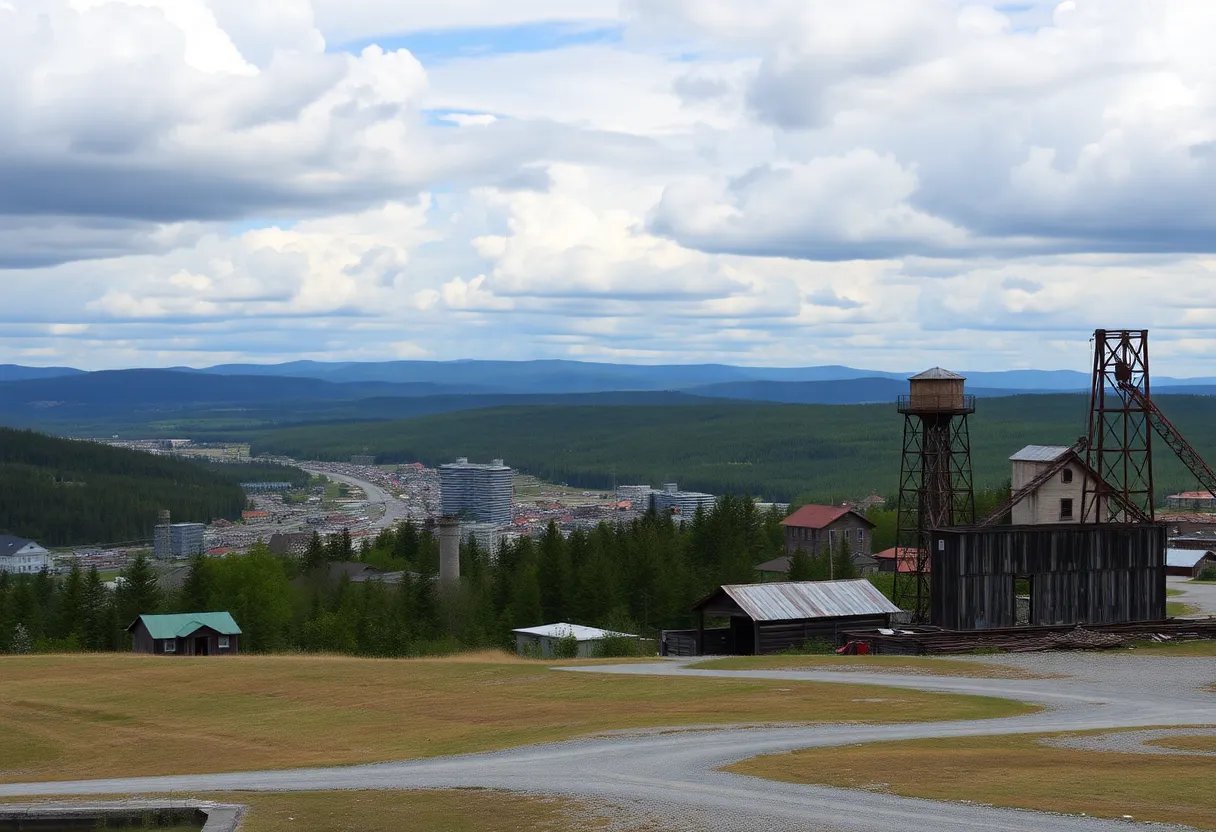News Summary
Asbestos Corporation Limited undergoes major restructuring as community grapples with its industrial past and seeks economic diversification.
Asbestos Corporation Limited Faces Major Restructuring Amid Town’s Industrial Legacy
As the saga of Asbestos Corporation Limited (ACL) unfolds, the historical backdrop of the town of Asbestos, Quebec, paints a picture of both struggle and resilience. On May 7, 2025, ACL was granted an Initial Order by the Superior Court of Quebec under the Companies’ Creditors Arrangement Act (CCAA), marking a pivotal moment for a company entrenched in a controversial industry. This order aims to assist ACL in its restructuring efforts while Raymond Chabot Inc. has been appointed as the Monitor to oversee this transition.
From Boom to Bust
Asbestos, a town aptly named for a mineral that once fueled its economy, is characterized by its historical affiliation with asbestos mining. The Jeffrey Mine, once the largest asbestos mine globally, operated for over 110 years before its closure in 2012. This operation was a significant source of employment for generations, but it left a tragic legacy: widespread health issues among local residents, including mesothelioma and other lung diseases caused by asbestos exposure.
Despite the dangers, the Canadian asbestos industry thrived, positioning Canada as the world’s largest exporter of the mineral by the 1970s. Its fire-resistant properties made it a favored choice in construction and shipbuilding. However, due to increasing awareness of the health risks associated with asbestos, a federal ban was instituted in 2025, preventing its manufacture, use, import, and export.
Economic Diversification in a Town Redefined
As the town of Asbestos grapples with its past, efforts are underway to diversify its economy and create new job opportunities. Following the closure of the Jeffrey Mine, unemployment rates in the region saw a decline from 12.4% in 2011 to 7.6% in 2016, reflecting a proactive response to economic challenges. New businesses, such as Moulin 7 microbrewery, have emerged, celebrating the mining heritage while providing employment opportunities. This microbrewery employs around 19 staff and is anticipating a production increase of 30% in the coming year.
Furthermore, a regional processing center dedicated to duck meat has created over 100 jobs, meeting the growing consumer demand. The local ski resort, Mont Gleason, adds seasonal employment opportunities for more than 250 workers during winters, highlighting the town’s adaptability in fostering a diverse economy.
New Prospects from Old Tailings
Interestingly, the legacy of the Jeffrey Mine has sparked renewed interest in re-mining the tailings left behind. Companies are investigating the extraction of valuable chemicals, such as magnesium, from these tailings, which are increasingly in demand for applications in electronics and electric vehicles. Alliance Magnesium has initiated a pilot facility near Asbestos to explore the feasibility of this venture, potentially creating 70 jobs and propelling the community towards a new direction.
The Digital Frontier and Community Resilience
Additionally, the region is considering cryptocurrency mining operations that leverage the area’s cheap electricity to unlock another avenue for economic growth. However, the community faces significant hurdles from its past, including environmental concerns related to mining residues that present ongoing health risks. Local leaders recognize the importance of crafting a path forward that prioritizes public health while reviving economic vitality.
The town has seen a steady demographic shift, influenced by its historical ties to asbestos and the mining industry. Population numbers have dramatically dropped from over 10,000 in the 1970s to around 7,000 today. Despite these challenges, local leaders, including Mayor Hugues Grimard, stress the community’s resilience and dedication to transforming Asbestos into a thriving hub of economic innovation.
A Cultural Legacy Preserved
As the community navigates the complexities of recovery and regeneration, the Asbestos Mineral Museum stands as a testament to the town’s unique heritage. Housing educational exhibits and rock samples, the museum preserves the history and consequences of asbestos mining for future generations.
Although the town of Asbestos is striving to shed the burden of its past, a cautious approach to development must remain paramount, influenced by the troubling legacy of asbestos exposure that still affects many in the community. With both challenges and opportunities on the horizon, the town remains at a crossroads, aiming for a healthier future while acknowledging its complex history.
Deeper Dive: News & Info About This Topic
HERE Resources
Asbestos-Related Health Risks Still Loom in Smithville, Tennessee
Tragedy Strikes Libby as Asbestos Screening Clinic Shuts Down
Asbestos and Lead Paint Concerns Emerge at Local Park and Schools
Florida Jury Awards $18 Million for Asbestos Exposure
Asbestos Crisis Deepens as CARD Clinic in Libby Shuts Down
The Palliser Regional Library Faces Asbestos Challenge: Major Upgrades Required
Slowing Down the Bulldozers: Asbestos Threat Halts Coca-Cola Plant Demolition
After Decades, Asbestos Still Takes its Toll on Mississippi Veterans
Janet Davies Urges Former Workers to Share Asbestos Information
Heroic Marathon Effort Raises Funds for Mesothelioma UK
Additional Resources
- BBC: The Town Fighting Its Killer Reputation
- Wikipedia: Asbestos
- ScienceDirect: Environmental Impact of Asbestos Mining
- Google Search: Asbestos Mining Impact
- Asbestos.com: Asbestos Mining Town’s New Identity
- Encyclopedia Britannica: Asbestos
- Montreal Gazette: Asbestos Town Restructuring
- Google News: Asbestos Quebec



















